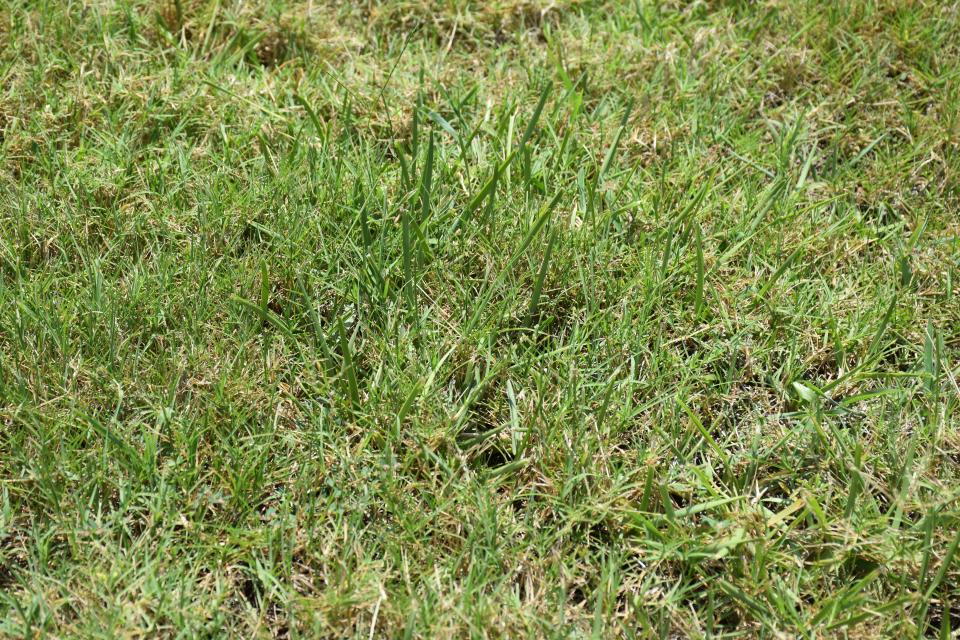What are your lawn options when the area's too shady for grass?
Growing grass in the shade is a problem with no easy answers.
By the time August arrives, shady areas are likely to show signs of thinning or even complete loss if shade is severe. Grass is a full-sun plant and when planted in shaded areas (defined as a site that receives less than 4 to 5 hours of direct sunlight daily) it performs poorly.
The filtering effect of trees significantly reduces the amount and quality of light grasses receive. This has an adverse effect on photosynthesis, the process that produces energy needed for the grasses to grow. What we see from this effect are grasses that are thin, weak, and have a lower tolerance to disease, drought and stress.
There are a few management practices that may help reduce the problems associated with growing grass in shade. Select shade-tolerant grasses when possible. Cool-season grasses like fine fescues (chewings, red, sheep and hard fescues) have excellent shade tolerance but are not tolerant of high temperatures.
More: Here are 8 stories we bet you've never heard about Evansville's Volksfest
Traditional tall fescues can tolerate high temperatures but are less tolerant of shade. Warm-season grasses have even less to offer in shade tolerance. Bermuda grass has extremely poor shade tolerance while Zoysia cultivars (i.e., El Toro, Cavalier) can tolerate light shade but tend to die out in a few years.
Raise your mowing height. Turf growing in shade needs a large leaf surface to intercept as much available light as possible. Raise your mower blade to 3 inches or higher. Also, mowing more frequently is beneficial since shaded grasses have a tendency to grow long and narrow.
Cutting excessively long grass will affect root growth and thus nutrient and water absorption by the plants. Remove clippings to prevent further reduction of light to the turf.

Reduce fertilizer applications. Lawn grass in shade requires only half to two-thirds as much nitrogen as grasses in full sun. Over-fertilizing can increase disease incidence and deplete grass carbohydrates resulting in a thin turf. Maintain proper soil pH, potassium, and phosphorous levels by soil testing.
Reduce water usage. Grasses in shady areas require less water than grasses in full sun. Water on an “as-needed” basis (i.e., when leaves begin to roll up, when impressions from foot traffic remain on the grass). When you do water, avoid shallow watering which encourages shallow roots.
Evaluate and modify existing trees. Trees that have open canopies and deep roots are more conducive to turf than those with dense foliage and shallow roots. Some tree species that cause fewer problems are sycamores, oaks, and elms. Undesirable trees include willow, popular, and some maples. Selectively pruning branches, especially low branches, can aid in light penetration.
Ideally, the lowest branches of trees should be 6 feet above the soil surface. Topping trees is not a recommend practice. If grass is a must, consider removing one or more trees that are contributing to the heaviest shade.
When establishing cool-season grasses in a shaded area, it is best to seed or sod early in the fall before tree leaves cover the ground. During the fall, continuously remove falling leaves to prevent smothering your new grass seedlings.
More: Here's what you can do to help the birds in your yard during hot weather
If you have tried all these practices and are still unsuccessful at growing grass in shade, why not consider other alternatives such as ornamentals, mulch, or groundcovers? Pea gravel, pine needles, and hardwood mulch is attractive and is certainly a better option than dirt or mud. Shrubs like, azaleas, rhododendron, mountain laurel (Kalmia), Japanese Pieris (Pieris japonica) will do well if the soil is well-drained. Hollies, boxwood, oakleaf hydrangea, skip & Otto Luyken laurel perform well in medium but not heavy shade.
Groundcovers are another alternative to turf and are readily available and easy to establish. The following is a list of groundcovers that do well in shade: Common Wintercreeper (Euonymus fortunei); Lenten Rose (Helleborus orientalis or chinensis); Hosta (Hosta spp.); Creeping Lilyturf (Liriope spicata); Mondo Grass (Ophiopogon japonicus); Japanese Spurge (Pachysandra terminalis); Common Periwinkle (Vinca minor).
P. Andrew Rideout is the UK Extension Agent for Horticulture and can be reached at pandrewrideout@uky.edu.
This article originally appeared on Evansville Courier & Press: How do I grow grass in the shade?

